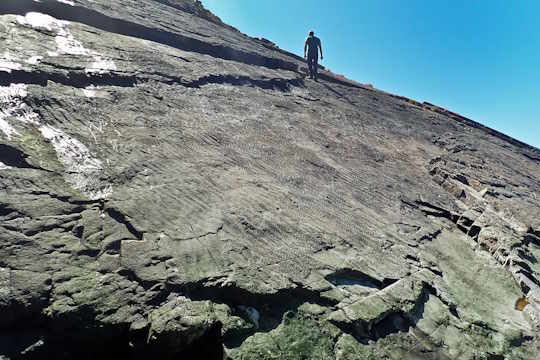They discovered evidence of the forest atop cliffs on the south side of the Bristol Channel, an Atlantic inlet that separates England and Wales. The sandstone cliffs, England’s highest, were long overlooked by paleobotanists, the researchers write, but it turns out they are home to the world’s oldest fossilized forest, predating the previous record holder by 4 million years.
The fossils are about 390 million years old, dating to the Devonian Period. Though often called the “age of fishes” because it coincided with a boom in marine life in the oceans that covered most of the planet, the period also marked the development of the first forests.
The fossilized plants were very different from modern ones. “This was a pretty weird forest,” Neil Davies, a lecturer in sedimentary geology at the University of Cambridge and the study’s first author, said in a news release. “There wasn’t any undergrowth to speak of and grass hadn’t yet appeared, but there were lots of twigs dropped by these densely-packed trees, which had a big effect on the landscape.”
The trees, known as Calamophyton, were shorter than modern trees and had thin, hollow trunks and no leaves, just twig-like growths they later shed. As the trees grew, they helped shape the world around them. Their root structures stabilized the soil, the researchers write, making it more resilient to floods. And the debris shed as the forests grew created new animal habitats, distributed nutrients, and helped form the landscape.
The fossils preserve an important stage in Earth’s development, Davies says in the release — and they serve as a reminder of how important it is to continue searching for evidence of Earth’s plant past, even in areas once considered insignificant.
“People sometimes think that British rocks have been looked at enough,” Davies notes, “but this shows that revisiting them can yield important new discoveries.”











